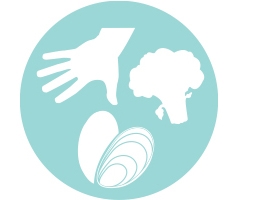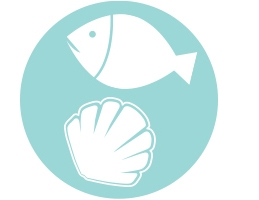What you need to know about food poisoning

sveta - stock.adobe.com.
Most bouts of food poisoning clear up on their own. But severe symptoms—like diarrhea that’s bloody or lasts more than three days, vomiting too much to keep liquids down, a fever over 102ºF, or signs of dehydration (like dizziness or infrequent urination)—require medical help. (If in doubt, call your doctor.) Here’s when and how contaminated food typically makes people sick.
(Scroll down to the table to see the symptoms and consequences of an infection from each bug.)
Meet the enemy

Campylobacter
Responsible for about 1.5 million cases of food poisoning each year in the U.S.
Common food sources
Undercooked poultry, raw milk.

Clostridium botulinum (Botulism)
Very rare, but can be deadly if not treated. Caused by a bacterial toxin that attacks the body’s nervous system.
Common food sources
Improperly home canned foods.

Clostridium perfringens
Produces heat-resistant spores that can transform into active, toxin-producing bacteria in foods that aren’t kept at the proper temperature. Causes about 1 million cases of food poisoning each year in the U.S.
Common food sources
Improperly cooled or stored high-protein foods, particularly meats and gravies.

Cyclospora
A parasite spread by food or water contaminated with feces, typically in tropical and subtropical regions.
Common food sources
Imported produce like berries, basil, snow peas, or lettuce.

Enterotoxigenic E. coli
Rare in the U.S., but the most common cause of “traveler’s diarrhea” in countries with poor sanitation.
Common food sources
Food or water that has been contaminated by feces.

Shiga toxin-producing E. coli (Including E. coli O157:H7)
A class of E. coli that can cause kidney failure and that may be fatal in severe cases.
Common food sources
Undercooked ground beef, leafy greens, raw sprouts.

Listeria monocytogenes
Rare, but one of the leading causes of death from foodborne illness. Primarily strikes older adults, pregnant people, newborns, and people with weakened immune systems. Can grow at refrigerator temperatures.
Common food sources
Raw milk, cheeses made with raw milk, deli meats.

Noroviruses
Often called the “stomach flu.” Causes 19 to 21 million (typically mild) infections each year in the U.S. Noroviruses spread easily and quickly (including for a few days after you feel better) through person-to-person contact and contaminated food.
Common food sources
Food handled by an infected person, raw produce, raw mollusks (oysters, clams, mussels, scallops).

Salmonella
The leading cause of serious foodborne illness in the U.S. Responsible for roughly 1.4 million cases each year.
Common food sources
Eggs, poultry, beef, flour (and many more foods).

Shigella
Spread through contaminated feces. Makes its way into food usually due to poor personal hygiene by someone preparing the food.
Common food sources
Ready-to-eat foods prepared by an infected food handler, raw fruits and vegetables.

Staphylococcus aureus
Typically caused when food isn’t kept at the proper temperature. Produces a toxin that isn’t destroyed by cooking.
Common food sources
Food contaminated by a person colonized with the bacteria. Frequently caused by improperly refrigerated foods like meats, potato salad, and egg salad.

Vibrios
Found in some warm coastal waters. Infections can happen any time of year, but are most common between May and October, when waters are warmest.
Common food sources
Raw or undercooked shellfish (particularly oysters) and fish.

Yersinia
Infection may be misdiagnosed as appendicitis or Crohn’s disease.
Common food sources
Undercooked pork like chitlins (pig intestines).
Sources: Centers for Disease Control and Prevention; Food and Drug Administration; J. Glenn Morris, professor of infectious diseases, director of the Emerging Pathogens Institute at the University of Florida, and co-editor of Foodborne Infections and Intoxications.
More on food safety
The cold, hard facts about frozen foods
Healthy Eating
By M.M. Bailey

Secret ingredients lurk in food, hidden as 'artificial flavor,' 'natural flavor,' and 'spices'
Food Additives

How food companies sneak new ingredients past the FDA
Food Additives

CSPI's accomplishments: Looking back at our 2023 victories
Food Additives

Food and health news you may have missed: Oct. 13, 2023
Food Safety


